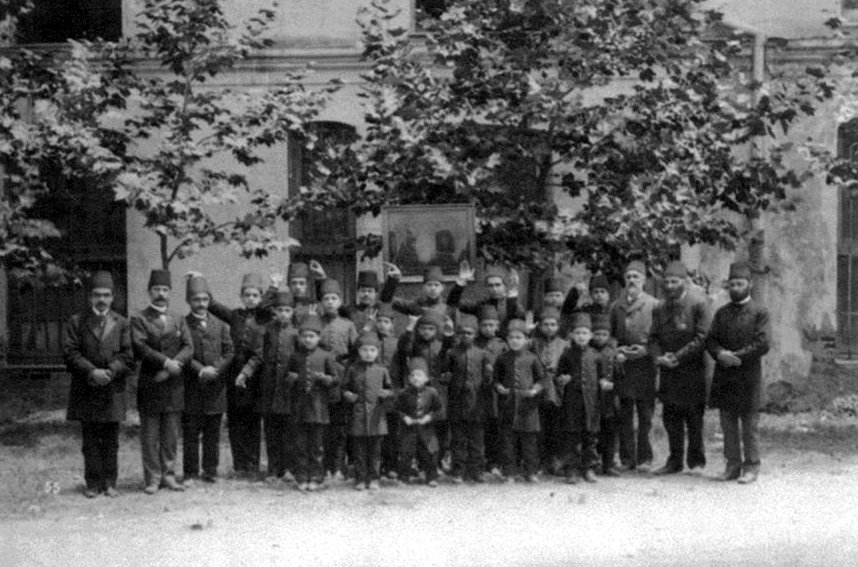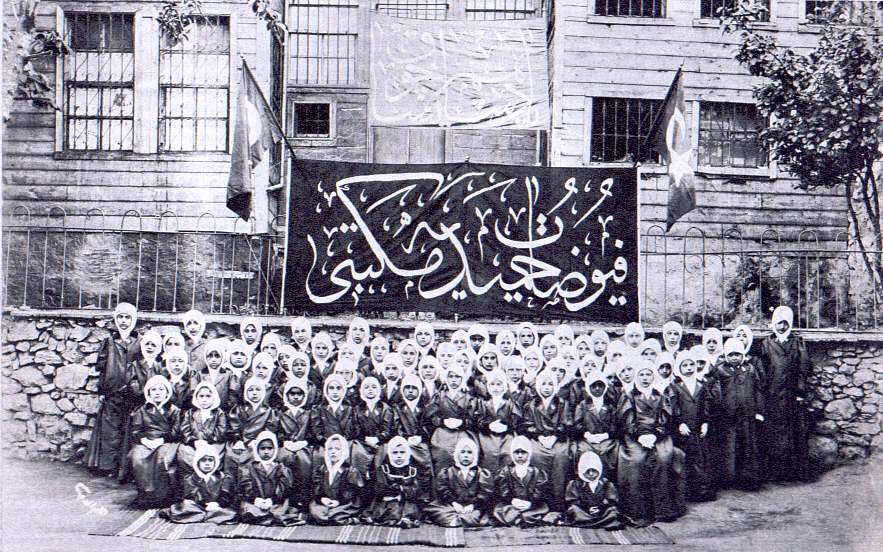.jpg)
WERE THE OTTOMANS ILLITERATE?
Republican statistics report the literacy rate in Türkiye in 1927 as 8.1%. However, this figure is quite problematic. Does it refer to those who know the Latin alphabet? Because according to the 1903 Maarif Salnamesi (yearbook of education), out of a population of 19,929,168, there were 1,375,511 students. Of this number, 868,879 were in primary school.
Thus, 5% of the population was attending primary school. There were also students attending secondary schools, high schools, and higher education, or unofficial schools, as well as those receiving private lessons. The number of civil servants reached hundreds of thousands. Considering that children aged 5–10 made up 10% of the population, one out of every two children was a student.
If we calculate based on the territories left in the hands of the Republic of Türkiye in 1923 from the lands of 1903, the proportion increases. For, out of the 12,516,308 people living there, 981,442 were primary school students. This amounts to 8% of the population. The literacy rate given by the new regime corresponds only to those attending primary school. According to the logic of statistics, if we assume that half of the remaining population had previously attended school, the literacy rate could not be below 50%. If a quarter had attended, this rate would be around 30%. Thus, one of these two statistics is lying.
Prof. Dr. Kemal Karpat, in his book Ottoman Population (p. 449), which he wrote based on statistics from the reign of Sultan Abdulhamid II, gives the literacy rate in the Ottoman State in the year 1894 as 54%. Some of those who otherwise trust the professor in every matter raised an outcry over this issue and attempted to object to the figure.
.jpg)
Between 1908 and 1914, the daily circulation of Istanbul newspapers alone was well over 100,000. Provincial newspapers were also lively. In 1928, the circulation of newspapers in Istanbul and Ankara (since the new regime allowed only three out of hundreds of newspapers) was 19,700. This represents a lower level than in the Ottoman period. Apart from the fact that the educated masses were consumed on the battlefronts during the World War, thanks to the Turkish alphabet reform, the “literate” segment of the population became “illiterate” in a single day.
Is the Arabic Alphabet Difficult?
This was a time when literacy did not mean much in society; even nobles, priests, and even kings did not know how to read and write, did not feel the need for it, and reading and writing were seen as crafts and were done, if necessary, in exchange for a fee. Moreover, in Eastern culture, it was not writing but the spoken word that held value. Oral culture was superior to written culture. Even though it was said, “What is out of mind stays in lines (on paper),” the saying “When knowledge passes from the chest (heart/memory) to the lines (writing), it is lost,” was preferred.

In 1927, out of a population of 13,650,000, 1,347,007 illiterate people learned to read and write with the new letters within ten years. The proportion of literate people in the population was 15% in 1935; 32% in 1960; and 46% in 1970. This shows that the new letters were insufficient in increasing the literacy rate. The reason for this low rate is not the difficulty of the Arabic alphabet or lack of means, but the absence of the desire and need to read and write. For an average intelligent person, it takes 3 months to learn reading and writing. In the case of the Arabic alphabet, this period is not longer than it is with the Latin alphabet. The author of these lines myself learned the Latin alphabet in 3 months, and since I was one of the top students in the class, I received a red ribbon; whereas I learned to read the Qur'an in just 15 days.
When passing judgment on a matter, one must take into account both the conditions of the time and also make comparisons. What was the situation in Europe in the same years? In 1890, the literacy rate in Russia was 17%; in Spain, 39%; in Italy, 45%; in Belgium, 74%; in France, 78%; in America, 89.3%; and in England, 92%. The Ottoman Empire, although an Eastern empire, was far ahead of Russia, which resembled it the most, and was at the same level as Spain and Italy.
Julie Pardoe, who came to Istanbul in 1830 with her father, who was an officer, and lived there for nearly a year, meeting people from all classes of society, says: “Except for Great Britain, perhaps there is no country in the world with more literate people than Turkey” (The City of the Sultan, Domestic Manners of the Turks, London 1851, p. 71)

Cipher Letters
In every village and neighborhood that has a mosque, there is a hodja, and therefore, an elementary school. It is mandatory to send both boys and girls there. Sultan Mahmud II has a decree on this matter. Villages without a mosque would hire a hodja in the winter or during Ramadan; this hodja would teach the children reading and writing. In these schools, which lasted 2–3 years, the curriculum included the Qur'an and its correct recitation (tajweed), spelling and composition (writing), ethics and catechism (religious studies), arithmetic, and a bit of history.
In Ottoman Turkish, written with Arabic letters, reading and writing were different skills. Some could read but not write. It is the same in China. Even European languages like French, since they are not pronounced as they are written, are difficult to read correctly even for those who know the alphabet. In Yemen, thanks to a method where reading and writing were taught together, there were virtually no illiterates. This method was applied in the elementary schools established after 1862.
I have spoken with thousands of elderly people who were heirs of the Ottoman era; I have not come across a single illiterate among them. Especially those who had received rüşdiye (secondary school) education, I consider them far above today’s university graduates. This can be understood from the memoirs and travelogues describing that era. For instance, Count Edward Raczynski, a Polish expert on antiquity who visited the Ottoman State in 1814, says: “Except for the lower class, almost everyone knows how to read and write.” (Journey to Istanbul and Çanakkale in 1814, p. 160)
The claim that literacy rates were low in the Ottoman lands is propaganda, to be expected, made to justify the revolution. Since the French Revolution, this has been the case. But it is surprising that the famous historian who makes this claim has not read the Ottoman statistics published by the state, of which he himself was one of the editors.
Önceki Yazılar
-
ROTHSCHILDS BROUGHT THE END OF THE OTTOMAN EMPIRE!5.11.2025
-
SHEIKH BEDREDDIN, SON OF THE QADI OF SIMAVNA29.10.2025
-
THE ROOTS OF THE ENGLISH POLITICIAN IN TURKEY – THE TRAGIC END OF ALI KEMAL BEY22.10.2025
-
WHERE IS THE RED APPLE?15.10.2025
-
THE ABBASIDS IN ANATOLIA1.10.2025
-
IMAMS AND MUFTIS AS OFFICERS IN THE OTTOMAN ARMY24.09.2025
-
SULTANS WOULD STAND UP FOR THE HEAD OF THE PROPHET'S LINEAGE17.09.2025
-
NO RETIREMENT BEFORE THE GRAVE10.09.2025
-
FROM PRISON TO THE PRESIDENTIAL PALACE: THE MUSLIM BROTHERHOOD3.09.2025
-
THE PUNISHMENT FOR BLASPHEMY OF THE SACRED27.08.2025